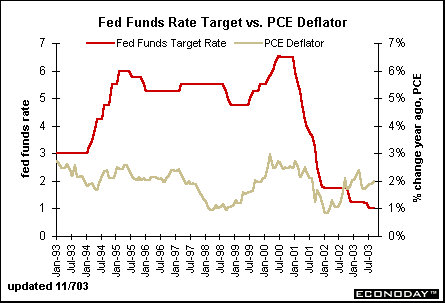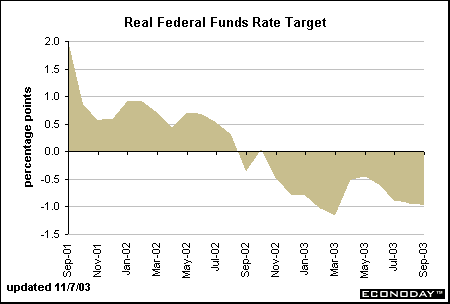 |

Long Term Perspective
The Federal Reserve targets the federal funds rate (the rate that banks charge each other for the use of overnight funds) in order to loosen or tighten monetary policy. It is easier to see whether monetary policy is restrictive or accommodative by the relationship between the funds rate target and the inflation rate. We use the year-over-year change in the PCE (personal consumption expenditure) deflator. When policy is accommodative, the gap between the two series narrows; when policy is tight, the gap widens.

Short Term Perspective
This chart shows the gap between the funds rate and the yearly change in the PCE deflator in a different way. In essence, the gap reflects the "real" (inflation-adjusted) federal funds rate. The federal funds rate target and the year-over-year change in the PCE deflator turned negative in September as the PCE deflator rose 2.2 percent from a year earlier while the fed funds rate target was under 2 percent. In October 2002, the real fed funds rate target was zero, but became negative again from November through September 2003. At these levels, monetary policy is highly stimulative as claimed by several Fed officials in the past few months. Analysts don't expect the Fed to raise rates until 2004.



Fed Funds Rate Target vs. CPI Inflation • Fed Funds Rate Target vs. Discount Rate • Nominal GDP vs. M2 Growth
|
 |